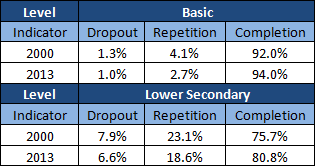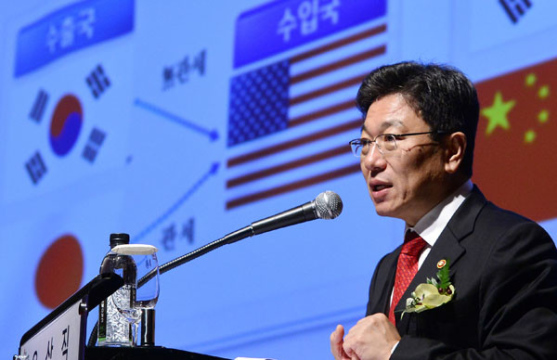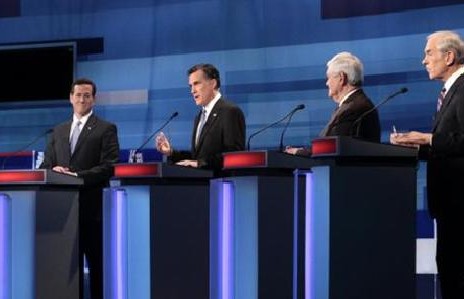
Mexican vs Chinese Factories
With the rising cost of wages in China, manufacturers are increasingly considering Mexico an attractive location to ‘re-shore’ production.
This post is also available in: Spanish
Inadequate administrative structures for planning and management of human resources are often a key (if not the main) source of internal inefficiency in many Latin American countries. This not only affects the functioning of the education system but also has strong fiscal implications. Sometimes when discussing with education sector stakeholders I have the feeling that many do not pay enough attention to, or even realize, that in many countries the education budget is critical for the overall fiscal situation and the overall health of the economy.
This was, indeed, the case of the Estado de Mexico (EdoMex) in the early 2000s – when I lived and worked in México and was closely involved in these issues. During this period, the budget of the education sector was the main source of an unsustainable internal debt for the state as it accounted for about 60% of the state’s spending. This forced EdoMex to face a fiscal emergency.
In spite of the financial effort, education sector outcomes were poor. Although coverage was good for primary education and somewhat for secondary education, internal efficiency was poor, and more importantly students were not acquiring the knowledge and skills envisaged in the curriculum or demanded by the labor market. There were other inefficiencies in the system, for example the fact that there were two different teachers’ management systems (one for teachers appointed by the state government and one for teachers appointed by the central government).
EdoMex received earmarked funds from the Federal Government based on previous budgets, with adjustments negotiated on the basis of inflation and state population, and, implicitly, political influence. In fact, Elba Esther Gordillo, the extremely influential head of the teachers’ union (Sindicato Nacional de Trabajadores de la Educación, SNTE) was from EdoMex and started her teaching career in that state.
The federal Secretary of Education negotiated teacher wages with the national union. Allocation of teachers was supposedly based on demand factors, like number of students, although union rules limited the impact of such factors. The system was explicitly driven by the supply of teachers, who were effectively guaranteed a job if they graduated from teachers’ schools (Escuelas Normales). They were also allowed to choose their place of work after a few years of seniority, often choosing administrative positions or urban schools that were already relatively well staffed. In addition, teachers were not held accountable for educational outcomes and often not even for their own attendance, especially in rural areas. Their supervisors were union representatives. This may sound familiar to readers all over Latin America.
In 2000, National and EdoMex authorities agreed to improve the efficiency in the use of resources in the education sector by implementing sectoral reforms. They introduced measures to control the level of spending -real outlays and teacher recruitment- and took initial steps to rationalize its organization and increase accountability for performance and efficiency.
Among the main policies/actions agreed to were the following:
Coverage in basic education improved from 82.3% in 2000 to 88.6% in 2013, moving EdoMex from 25th place among all states, to 12th. Improvements in efficiency indicators for basic and lower secondary education in EdoMex for the same period are presented in the Table below. Students to teacher ratio reached 24.6 by 2013, close to the national average which, as expected, did not change much from 2000. Allocation of teachers improved by identifying ‘ghost’ teachers using a new human resources management system developed by the Federal Secretary of Education. In 2000 more than 5% of teachers in the payroll were identified as ‘ghosts’. And a competitive process (concurso de oposición) was launched for all new entry-level jobs, ending the previous policy of automatic hiring of all graduates of the normal schools.

Source: Sistema de Información y Gestión Educativa (SIGED), SEP, México.
At that time, I thought it would have been wise to adopt these policies for the entire country. However, this only happened thirteen years later when the new President of Mexico, Enrique Peña Nieto (who had been the Under-Secretary of Government in Edo Mex in 2000), signed sweeping education reforms into law to wrest control from the SNTE. The new law created an autonomous agency for education evaluation, set up competitive rules for entry into and promotion within the teaching profession, and strengthened school’s administrative autonomy with parental participation.Foto EdoMex
This story shows several lessons: (i) education reform has many implications that many do not take into account, like the need to manage resources in an efficient way to protect the macroeconomic environment of an economy; (ii) implementing efficiency-gaining policies may take significant time and strong political willingness; and (iii) there are many positive lessons from history that are not well documented and could serve as guidance to policymakers who want to support efficient education systems.
Photo credit: Lucy Nieto / Flickr / CC BY-NC 2.0
With the rising cost of wages in China, manufacturers are increasingly considering Mexico an attractive location to ‘re-shore’ production.
South Korea’s entry into the TPP will promote stronger cooperation between South Korea and Latin America.
Three questions regarding education the 2012 presidential hopefuls should be pressed on.

